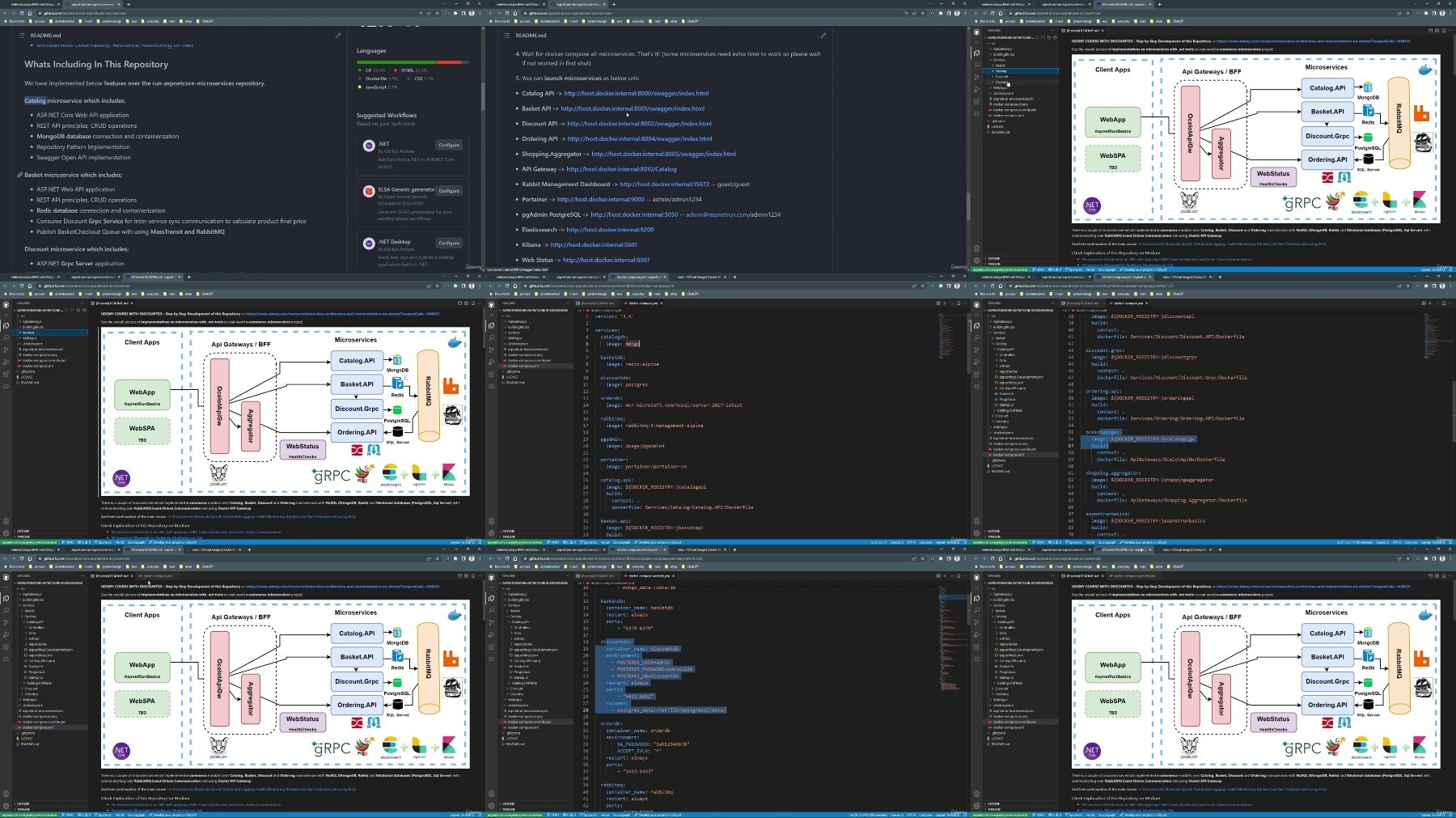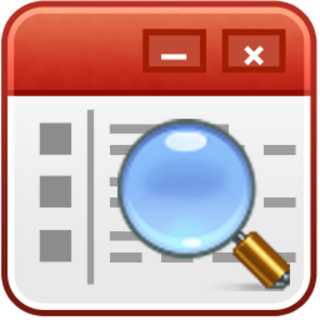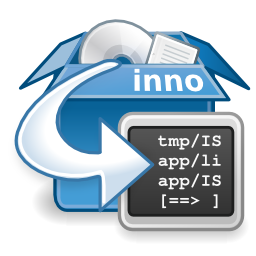Most Commented
Design Microservices Architecture with Patterns & Principles (2021)




Description material

Design Microservices Architecture with Patterns & Principles
WEBRip | English | MP4 | 1280 x 720 | AVC ~904 Kbps | 30 fps
AAC | 128 Kbps | 48.0 KHz | 2 channels | Subs: English (.srt) | ~10 hours | 4.53 GB Genre: eLearning Video / IT & Software, Other IT & Software, Microservices
Handle millions of request with designing high scalable and high available systems on microservices architecture.
What you'll learn
Design Microservices Architecture with using Design Patterns, Principles and the Best Practices
Learn how to handle millions of request with designing system for high availability, high scalability, low latency, and resilience to network failures
Journey of software architecture design
Step by step evolving architecture monolithic to event driven microservices
Designing e-commerce monolithic - Layered - SOA - Microservices - Event-Driven Architecture
Microservices Decomposition Strategies
Microservices Communications (Sync / Async Message-Based Communication, API Gws)
Microservices Data Management (Databases / Query / Commands / Distributed Transactions)
Microservices Distributed Caching
Microservices Deployments with Containers and Orchestrators
Microservices Design Patterns and Best Practices
The Database-per-Service Pattern, Api Gateway Pattern, Backends for Frontends pattern BFF
Service Aggregator Pattern, Service Registry Pattern
CQRS and Event Sourcing Patterns, Eventual Consistency Principle, CAP Theorem
Materialized View Pattern, Publish–Subscribe Pattern, Database Sharding Pattern
Saga Pattern, Outbox Pattern
Code Review for Existing Microservices Architecture Repository on GitHub
Hands-on Design Activities, Iterate Design Architecture from On-Premises to Cloud Serverless architectures
Evolves architecture monolithic to event-driven microservices architectures
Refactoring System Design for handling million of requests
Prepare for Software Architecture Interviews
Prepare for System Design Architecture Interviews
Requirements
Software Architecture Basics
Description
In this course, we're going to learn how to Design Microservices Architecture with using Design Patterns, Principles and the Best Practices. We will using the right architecture design patterns and techniques.
By the end of the course, you will Learn how to handle millions of request with designing system for high availability, high scalability, low latency, and resilience to network failures on microservices distributed architectures.
This course is will be the journey of software architecture design with step by step evolving architecture monolithic to event driven microservices.
We will start the basics of software architecture with designing e-commerce monolithic architecture that handles low amount of requests.
After that step by step evolves the architecture with
Layered Architecture
SOA
Microservices
and lastly Event Driven Microservices Architectures
with designing together that handle millions of requests.
We will discuss microservices architectures with all aspects,
Microservices Decomposition
Microservices Communications (Sync / Async Message-Based Communication, API Gws)
Microservices Data Management (Databases / Query / Commands / Distributed Transactions)
Microservices Distributed Caching
Microservices Deployments with Containers and Orchestrators
with applying microservices design patterns and practices.
We are going to design with together and step by step with our drawing tool that we will use this designing architectures.
We will start with designing Monolithic Architecture. And you can see that we have Functional and Non-functional requirements that should cover our design and we have patterns and principles toolbox that we will learn and use these principles when evolving architectures.
You will find that we will add new requirements in order to handle millions of request and learn new patterns and practices that will use these principles when evolving architectures.
Layered Architecture
SOA
Microservices Architectures
Microservices Architectures API Gws
Microservices Architectures API Gws - BFF
Microservices Architecture - Service Aggregator / Registry Patterns
Microservices Architecture - Message Broker
Microservices Architecture - Database Sharding Cassandra
Event-Driven Microservices Architecture
Microservices Distributed Caching
Microservices Containers and Orchestrators
We will see full of patterns and principle toolbox is loading with new patterns and apply them into current designs. We will see latest patterns that we use more than 30 patterns and practices with implementing High scalability, High availability and handle millions of request requirements.
Let me write some microservices pattern which we covered in this courses;
The Database-per-Service Pattern
API Gateway Pattern
Backends for Frontends pattern BFF
Service Aggregator Pattern, Service Registry Pattern
CQRS and Event Sourcing Patterns
Materialized View Pattern
Publish–Subscribe Pattern
Database Sharding Pattern
Saga Pattern
Outbox Pattern
and so on..
So the course flow will be the both theoretical and practical information;
We will learn a specific pattern, why and where we should use
After that we will see the Reference architectures that applied these patterns
After that we will design our architecture with applying this newly learned pattern with together
And lastly we will decide which Technologies can be choices for that architectures.
And at the last section, we will made Code Review for Existing Microservices Architecture Repository on GitHub for practical implementation of microservices architecture.
So this course will includes
Hands-on Design Activities
Iterate Design Architecture from On-Premises to Cloud Server-less architectures
Evolves architecture monolithic to Event-Driven Microservices Architectures
Refactoring System Design for handling million of requests
Apply best practices with microservices design patterns and principles
Examine microservices patterns with all aspects like Communications, Data Management, Caching and Deployments
Prepare for Software Architecture Interviews
Prepare for System Design Architecture Interview exams.
I have been joined several famous company's architecture position interviews, also involved software architect positions assessment process more than 50+ interviews collect the architecture requirements for software industry positions.
So with this course, you will gain real-world experience about all architecture positions from monolithic to event-driven microservices architectures.
This course prepared for the beginner but at least you should familiar with basics of software architectures. This course will have good theoretical information but also will be 90% of hands-on design activities. All course architecture steps will designed step by step and together.
I hope you'll join me on this journey and develop this project with me.
Who this course is for:
Who wants to be Software Architecture
Who wants to be Solution Architecture
Who wants to pass System Design Architecture Interview
also You can find my other useful:
General
Complete name : 004 Microservices Synchronous Communication Patterns and Best Practices.mp4
Format : MPEG-4
Format profile : Base Media
Codec ID : isom (isom/iso2/avc1/mp41)
File size : 25.8 MiB
Duration : 3 min 27 s
Overall bit rate : 1 041 kb/s
Writing application : Lavf58.12.100
Video
ID : 1
Format : AVC
Format/Info : Advanced Video Codec
Format profile : [email protected]
Format settings : CABAC / 4 Ref Frames
Format settings, CABAC : Yes
Format settings, RefFrames : 4 frames
Format settings, GOP : M=4, N=60
Codec ID : avc1
Codec ID/Info : Advanced Video Coding
Duration : 3 min 27 s
Bit rate : 904 kb/s
Nominal bit rate : 3 000 kb/s
Width : 1 280 pixels
Height : 720 pixels
Display aspect ratio : 16:9
Frame rate mode : Constant
Frame rate : 30.000 FPS
Color space : YUV
Chroma subsampling : 4:2:0
Bit depth : 8 bits
Scan type : Progressive
Bits/(Pixel*Frame) : 0.033
Stream size : 22.4 MiB (87%)
Writing library : x264 core 148
Encoding settings : cabac=1 / ref=3 / deblock=1:0:0 / analyse=0x1:0x111 / me=umh / subme=6 / psy=1 / psy_rd=1.00:0.00 / mixed_ref=1 / me_range=16 / chroma_me=1 / trellis=1 / 8x8dct=0 / cqm=0 / deadzone=21,11 / fast_pskip=1 / chroma_qp_offset=-2 / threads=22 / lookahead_threads=3 / sliced_threads=0 / nr=0 / decimate=1 / interlaced=0 / bluray_compat=0 / constrained_intra=0 / bframes=3 / b_pyramid=2 / b_adapt=1 / b_bias=0 / direct=1 / weightb=1 / open_gop=0 / weightp=2 / keyint=60 / keyint_min=6 / scenecut=0 / intra_refresh=0 / rc_lookahead=60 / rc=cbr / mbtree=1 / bitrate=3000 / ratetol=1.0 / qcomp=0.60 / qpmin=0 / qpmax=69 / qpstep=4 / vbv_maxrate=3000 / vbv_bufsize=6000 / nal_hrd=none / filler=0 / ip_ratio=1.40 / aq=1:1.00
Audio
ID : 2
Format : AAC
Format/Info : Advanced Audio Codec
Format profile : LC
Codec ID : mp4a-40-2
Duration : 3 min 27 s
Bit rate mode : Constant
Bit rate : 128 kb/s
Channel(s) : 2 channels
Channel positions : Front: L R
Sampling rate : 48.0 kHz
Frame rate : 46.875 FPS (1024 SPF)
Compression mode : Lossy
Stream size : 3.17 MiB (12%)
Default : Yes
Alternate group : 1
Screenshots
Exclusive eLearning Videos ← add to bookmarks

https://rapidgator.net/file/86a17c86c33bd78c82db52ffbfd10f41/Udemy_Design_Microservices_Architecture_with_Patterns_Principles.part1.rar
https://rapidgator.net/file/aab9fff44a315e031821c1294179573b/Udemy_Design_Microservices_Architecture_with_Patterns_Principles.part2.rar
https://rapidgator.net/file/8e8876b62ab1db792095b07ddffad509/Udemy_Design_Microservices_Architecture_with_Patterns_Principles.part3.rar

https://filestore.me/1zf8tkri7l7y/Udemy_Design_Microservices_Architecture_with_Patterns_Principles.part1.rar
https://filestore.me/o4udd3kyqtg9/Udemy_Design_Microservices_Architecture_with_Patterns_Principles.part2.rar
https://filestore.me/x3od9efd77bm/Udemy_Design_Microservices_Architecture_with_Patterns_Principles.part3.rar
AAC | 128 Kbps | 48.0 KHz | 2 channels | Subs: English (.srt) | ~10 hours | 4.53 GB Genre: eLearning Video / IT & Software, Other IT & Software, Microservices
Handle millions of request with designing high scalable and high available systems on microservices architecture.
What you'll learn
Design Microservices Architecture with using Design Patterns, Principles and the Best Practices
Learn how to handle millions of request with designing system for high availability, high scalability, low latency, and resilience to network failures
Journey of software architecture design
Step by step evolving architecture monolithic to event driven microservices
Designing e-commerce monolithic - Layered - SOA - Microservices - Event-Driven Architecture
Microservices Decomposition Strategies
Microservices Communications (Sync / Async Message-Based Communication, API Gws)
Microservices Data Management (Databases / Query / Commands / Distributed Transactions)
Microservices Distributed Caching
Microservices Deployments with Containers and Orchestrators
Microservices Design Patterns and Best Practices
The Database-per-Service Pattern, Api Gateway Pattern, Backends for Frontends pattern BFF
Service Aggregator Pattern, Service Registry Pattern
CQRS and Event Sourcing Patterns, Eventual Consistency Principle, CAP Theorem
Materialized View Pattern, Publish–Subscribe Pattern, Database Sharding Pattern
Saga Pattern, Outbox Pattern
Code Review for Existing Microservices Architecture Repository on GitHub
Hands-on Design Activities, Iterate Design Architecture from On-Premises to Cloud Serverless architectures
Evolves architecture monolithic to event-driven microservices architectures
Refactoring System Design for handling million of requests
Prepare for Software Architecture Interviews
Prepare for System Design Architecture Interviews
Requirements
Software Architecture Basics
Description
In this course, we're going to learn how to Design Microservices Architecture with using Design Patterns, Principles and the Best Practices. We will using the right architecture design patterns and techniques.
By the end of the course, you will Learn how to handle millions of request with designing system for high availability, high scalability, low latency, and resilience to network failures on microservices distributed architectures.
This course is will be the journey of software architecture design with step by step evolving architecture monolithic to event driven microservices.
We will start the basics of software architecture with designing e-commerce monolithic architecture that handles low amount of requests.
After that step by step evolves the architecture with
Layered Architecture
SOA
Microservices
and lastly Event Driven Microservices Architectures
with designing together that handle millions of requests.
We will discuss microservices architectures with all aspects,
Microservices Decomposition
Microservices Communications (Sync / Async Message-Based Communication, API Gws)
Microservices Data Management (Databases / Query / Commands / Distributed Transactions)
Microservices Distributed Caching
Microservices Deployments with Containers and Orchestrators
with applying microservices design patterns and practices.
We are going to design with together and step by step with our drawing tool that we will use this designing architectures.
We will start with designing Monolithic Architecture. And you can see that we have Functional and Non-functional requirements that should cover our design and we have patterns and principles toolbox that we will learn and use these principles when evolving architectures.
You will find that we will add new requirements in order to handle millions of request and learn new patterns and practices that will use these principles when evolving architectures.
Layered Architecture
SOA
Microservices Architectures
Microservices Architectures API Gws
Microservices Architectures API Gws - BFF
Microservices Architecture - Service Aggregator / Registry Patterns
Microservices Architecture - Message Broker
Microservices Architecture - Database Sharding Cassandra
Event-Driven Microservices Architecture
Microservices Distributed Caching
Microservices Containers and Orchestrators
We will see full of patterns and principle toolbox is loading with new patterns and apply them into current designs. We will see latest patterns that we use more than 30 patterns and practices with implementing High scalability, High availability and handle millions of request requirements.
Let me write some microservices pattern which we covered in this courses;
The Database-per-Service Pattern
API Gateway Pattern
Backends for Frontends pattern BFF
Service Aggregator Pattern, Service Registry Pattern
CQRS and Event Sourcing Patterns
Materialized View Pattern
Publish–Subscribe Pattern
Database Sharding Pattern
Saga Pattern
Outbox Pattern
and so on..
So the course flow will be the both theoretical and practical information;
We will learn a specific pattern, why and where we should use
After that we will see the Reference architectures that applied these patterns
After that we will design our architecture with applying this newly learned pattern with together
And lastly we will decide which Technologies can be choices for that architectures.
And at the last section, we will made Code Review for Existing Microservices Architecture Repository on GitHub for practical implementation of microservices architecture.
So this course will includes
Hands-on Design Activities
Iterate Design Architecture from On-Premises to Cloud Server-less architectures
Evolves architecture monolithic to Event-Driven Microservices Architectures
Refactoring System Design for handling million of requests
Apply best practices with microservices design patterns and principles
Examine microservices patterns with all aspects like Communications, Data Management, Caching and Deployments
Prepare for Software Architecture Interviews
Prepare for System Design Architecture Interview exams.
I have been joined several famous company's architecture position interviews, also involved software architect positions assessment process more than 50+ interviews collect the architecture requirements for software industry positions.
So with this course, you will gain real-world experience about all architecture positions from monolithic to event-driven microservices architectures.
This course prepared for the beginner but at least you should familiar with basics of software architectures. This course will have good theoretical information but also will be 90% of hands-on design activities. All course architecture steps will designed step by step and together.
I hope you'll join me on this journey and develop this project with me.
Who this course is for:
Who wants to be Software Architecture
Who wants to be Solution Architecture
Who wants to pass System Design Architecture Interview
also You can find my other useful:
General
Complete name : 004 Microservices Synchronous Communication Patterns and Best Practices.mp4
Format : MPEG-4
Format profile : Base Media
Codec ID : isom (isom/iso2/avc1/mp41)
File size : 25.8 MiB
Duration : 3 min 27 s
Overall bit rate : 1 041 kb/s
Writing application : Lavf58.12.100
Video
ID : 1
Format : AVC
Format/Info : Advanced Video Codec
Format profile : [email protected]
Format settings : CABAC / 4 Ref Frames
Format settings, CABAC : Yes
Format settings, RefFrames : 4 frames
Format settings, GOP : M=4, N=60
Codec ID : avc1
Codec ID/Info : Advanced Video Coding
Duration : 3 min 27 s
Bit rate : 904 kb/s
Nominal bit rate : 3 000 kb/s
Width : 1 280 pixels
Height : 720 pixels
Display aspect ratio : 16:9
Frame rate mode : Constant
Frame rate : 30.000 FPS
Color space : YUV
Chroma subsampling : 4:2:0
Bit depth : 8 bits
Scan type : Progressive
Bits/(Pixel*Frame) : 0.033
Stream size : 22.4 MiB (87%)
Writing library : x264 core 148
Encoding settings : cabac=1 / ref=3 / deblock=1:0:0 / analyse=0x1:0x111 / me=umh / subme=6 / psy=1 / psy_rd=1.00:0.00 / mixed_ref=1 / me_range=16 / chroma_me=1 / trellis=1 / 8x8dct=0 / cqm=0 / deadzone=21,11 / fast_pskip=1 / chroma_qp_offset=-2 / threads=22 / lookahead_threads=3 / sliced_threads=0 / nr=0 / decimate=1 / interlaced=0 / bluray_compat=0 / constrained_intra=0 / bframes=3 / b_pyramid=2 / b_adapt=1 / b_bias=0 / direct=1 / weightb=1 / open_gop=0 / weightp=2 / keyint=60 / keyint_min=6 / scenecut=0 / intra_refresh=0 / rc_lookahead=60 / rc=cbr / mbtree=1 / bitrate=3000 / ratetol=1.0 / qcomp=0.60 / qpmin=0 / qpmax=69 / qpstep=4 / vbv_maxrate=3000 / vbv_bufsize=6000 / nal_hrd=none / filler=0 / ip_ratio=1.40 / aq=1:1.00
Audio
ID : 2
Format : AAC
Format/Info : Advanced Audio Codec
Format profile : LC
Codec ID : mp4a-40-2
Duration : 3 min 27 s
Bit rate mode : Constant
Bit rate : 128 kb/s
Channel(s) : 2 channels
Channel positions : Front: L R
Sampling rate : 48.0 kHz
Frame rate : 46.875 FPS (1024 SPF)
Compression mode : Lossy
Stream size : 3.17 MiB (12%)
Default : Yes
Alternate group : 1
Screenshots
Exclusive eLearning Videos ← add to bookmarks

https://rapidgator.net/file/86a17c86c33bd78c82db52ffbfd10f41/Udemy_Design_Microservices_Architecture_with_Patterns_Principles.part1.rar
https://rapidgator.net/file/aab9fff44a315e031821c1294179573b/Udemy_Design_Microservices_Architecture_with_Patterns_Principles.part2.rar
https://rapidgator.net/file/8e8876b62ab1db792095b07ddffad509/Udemy_Design_Microservices_Architecture_with_Patterns_Principles.part3.rar

https://filestore.me/1zf8tkri7l7y/Udemy_Design_Microservices_Architecture_with_Patterns_Principles.part1.rar
https://filestore.me/o4udd3kyqtg9/Udemy_Design_Microservices_Architecture_with_Patterns_Principles.part2.rar
https://filestore.me/x3od9efd77bm/Udemy_Design_Microservices_Architecture_with_Patterns_Principles.part3.rar
Join to our telegram Group
Information
Users of Guests are not allowed to comment this publication.
Users of Guests are not allowed to comment this publication.
Choose Site Language
Recommended news
Commented


![eM Client Pro 9.2.1735 Multilingual [Updated]](https://pikky.net/medium/wXgc.png)






![Movavi Video Editor 24.0.2.0 Multilingual [ Updated]](https://pikky.net/medium/qhrc.png)

